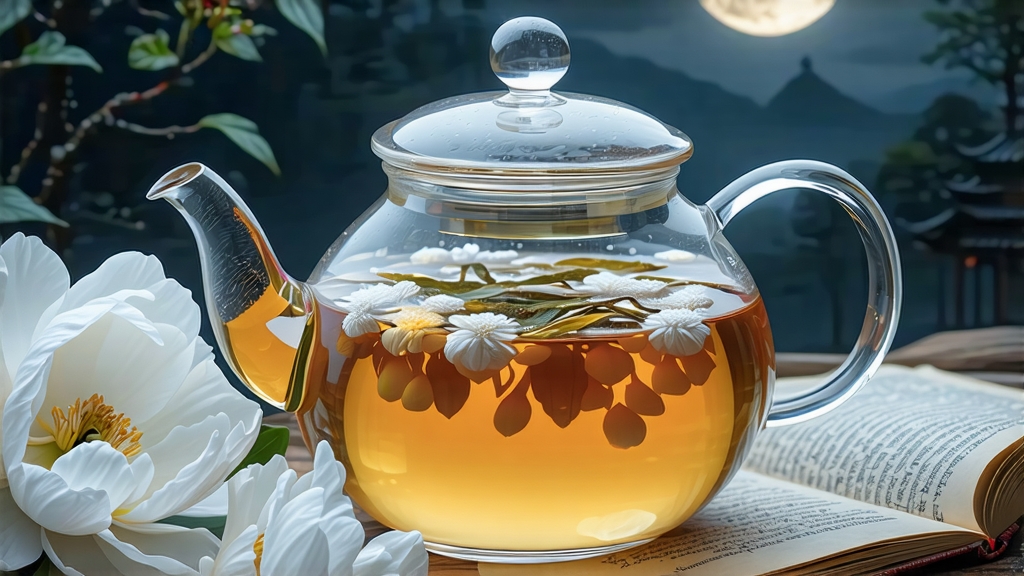
Among the six great families of Chinese tea, white tea is the most delicate recluse, and within that quiet house Silver Needle—Bai Hao Yin Zhen—sits like a pale scholar writing poems with moonlight. International drinkers often meet white tea first through airy supermarket bags labeled merely “white,” yet the original Silver Needle remains a niche luxury even inside China. To understand why, one must follow the tea’s faint scent back to the coastal mountains of Fujian, where sea fog and volcanic soil conspire to create a bud so saturated with tiny hairs that it literally shimmers.
Historical whispers place the birth of Silver Needle in the early Song dynasty, when imperial tribute lists demanded “small buds from the north of Min.” Solid written records, however, surface only during the Qing Qianlong era (1736-1795), when Fuding county first shipped compressed cakes of needle-shaped buds to the court in Beijing. The cakes were later abandoned for loose form to preserve the downy appearance, and by 1857 the county gazette noted that “one liang of Yin Zhen equals one liang of silver,” giving the tea its monetary nickname. Export began through Fuzhou’s treaty port in 1891, and Edwardian London christened it “Silver Tips,” selling it at Harrods for more than first-flush Darjeeling. Yet war and revolution drove the gardens back into obscurity until 1963, when the state re-opened the Fuding Tea Research Station and cloned the original Da Bai cultivar, securing the variety’s genetic future.
Strict Chinese国家标准 GB/T 22291-2017 defines genuine Silver Needle as the unopened bud of Camellia sinensis var. sinensis cv. Da Bai or Da Hao, plucked only between the Qingming and Grain Rain solar terms (early April). A single kilo demands roughly thirty-eight thousand buds, all picked before ten a.m. while dew still glitters. The geographic indication covers only three townships—Taimu Mountain, Guan Yang, and Dian Tou—where red granitic soils drain quickly and the diurnal range can exceed 10 °C. Within this micro-zone, altitude grades the fragrance: gardens at 200 m give sweet magnolia notes, while slopes above 600 m add cool cucumber and marine minerality. Connoisseurs therefore speak of “high-needle” versus “coastal-needle” much like Burgundy crus.
Crafting Silver Needle is an exercise in disciplined inactivity. The buds are first laid upon bamboo trays in a shaded shed for twenty-four hours of “soft withering,” allowing internal moisture to migrate outward without oxidizing enzymes. Next comes the signature “sun-withering,” but only for forty minutes around 9:30 a.m., when UV index stays below four; stronger sun would scorch the hairs and bake amino acids into grassy bitterness. Workers flip the buds every five minutes using a feather-weight rattan tool, ensuring even exposure. The moment surface moisture drops to thirty percent, trays are moved indoors for a six-hour “moonlight rest,” a traditional nocturnal equilibration that lowers leaf temperature and fixes the tea’s lilac aroma. No rolling, no pan-firing, no kneading—just a final forty-degree bake for twenty minutes to reach seven percent moisture. The entire cycle must finish within forty-eight hours; longer and the buds darken, forfeiting the premium “silver” luster.
Because the cell structure remains almost intact, Silver Needle ages unlike any other white tea. Stored at 25 °C and 50 % humidity, the buds slowly auto-oxidize, trading fresh cucumber for honeydew and then marzipan. A 2018 study at Zhejiang University tracked theaflavin conversion over five years, finding that aged needles develop twice the gallic acid of young ones, explaining the deeper amber color and peach-pit sweetness prized in Guangzhou tea markets. Collectors therefore vacuum-seal cakes of 500 g and label them like vintages, breaking them only for new-born celebrations or business guanxi.
Brewing Silver Needle is a lesson in restraint. Begin with neutral water around 85 °C; hotter temperatures extract tannins that swamp the tea’s signature umami. A 150 ml gaiwan receives three grams of buds—roughly two heaping teaspoons—allowing space for the vertical expansion that releases “the standing needle” spectacle. After a five